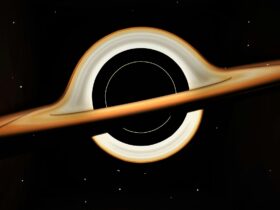Deeper knowledge of Earth’s atmosphere could help us find signs of life outside of our solar system.
How did the Earth have enough oxygen to support animal life? In a study by McGill University, they found that oxygen levels rose in the same way that complicated, eukaryotic ecosystems grew and evolved. Their findings are the strongest evidence to date that very low oxygen levels had a big impact on evolution for billions of years.
Maxwell Lechte, a postdoctoral researcher in the Department of Earth and Planetary Sciences under the supervision of Galen Halverson at McGill University said:
“Until now, there was a critical gap in our understanding of environmental drivers in early evolution. The early Earth was marked by low levels of oxygen, till surface oxygen levels rose to be sufficient for animal life. But projections for when this rise occurred varied by over a billion years–possibly even well before animals had evolved.”

On a rocky ridge in the Wernecke Mountains near McGill University, Professor Galen Halverson is looking for ironstone deposits, which can be found there (Yukon, Canada). A big thanks to Maxwell Lechte for making this possible!
Ironstones Give us a Glimpse into Humanity Early Life
To find out what happened, the researchers looked at iron-rich sedimentary rocks from around the world that were deposited in ancient seas. When the researchers looked at the chemistry of the iron in these rocks, they could figure out how much oxygen was in the air when the rocks were made. This allowed them to figure out how early life, like eukaryotic microorganisms, would have been affected by the amount of oxygen in the air.
“These ironstones offer insights into the oxygen levels of shallow marine environments, where life was evolving. The ancient ironstone record indicates around less than 1 % of modern oxygen levels, which would have had an immense impact on ecological complexity,” says Changle Wang, a researcher at the Chinese Academy of Sciences who co-led the study with Lechte.

Ironstones are sedimentary rocks that have been on the coast for millions of years. They are made up of granules of iron oxide that show how much oxygen was in the air when they were formed. A big thanks to Maxwell Lechte for this photo!
“These low oxygen conditions persisted until about 800 million years ago, right when we first start to see evidence of the rise of complex ecosystems in the rock record. So if complex eukaryotes were around before then, their habitats would have been restricted by low oxygen,” says Lechte.
Only Earth is known to be home to living things. The Earth’s atmosphere and oceans are full of oxygen today. This was not always the case. Plants and other organisms use the process of photosynthesis to turn light into energy. Oxygen was released into the air, which made it possible for humans and other animals to breathe and live.
People are Looking for Signs of Life Outside of our Solar System
According to the researchers, the new findings show that Earth’s atmosphere was able to keep low levels of oxygen in the air for billions of years. This has important implications for the search for signs of life outside our solar system. Scientists look for traces of oxygen in the air to see if there was or is life on a planet in the past or now. This is called a “biosignature.”
Scientists use the history of Earth to figure out how much oxygen terrestrial planets can keep stable. If terrestrial planets can stay stable at low levels of oxygen, as the findings suggest, the best way to find oxygen will be to look for its photochemical byproduct, ozone, say the researchers.

Ironstones are found in the sedimentary rock layers of the Grand Canyon (Arizona, USA), which give us information about how the oceans looked in the past. Susannah Porter is the person who gave us the credit for this picture.
“Ozone is very good at blocking ultraviolet light, which makes it possible to detect ozone even when there isn’t much oxygen in the air. This paper says that space-based telescopes that can see ultraviolet light will make it much more likely that we will find signs of life on planets outside our solar system “He says that Noah Planavsky is a biogeochemist at Yale University and that the weather has been very hot.
It will help scientists paint a clearer picture of how oxygen levels changed during this time, and they will be able to better understand what happened to the global oxygen cycle as a result.
The Study
The paper “Strong evidence for a weakly oxygenated ocean-atmosphere system during the Proterozoic” by Changle Wang and other scientists was published in the Proceedings of the National Academy of Sciences. They found that the Proterozoic was a time when the oceans and atmosphere were not very oxygenated.












Leave a Reply